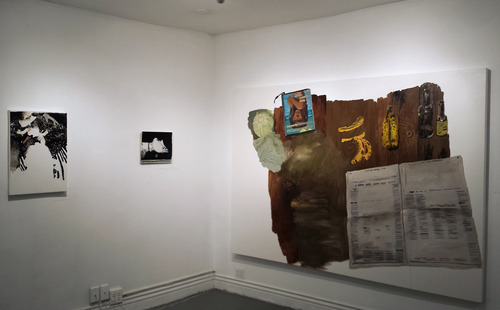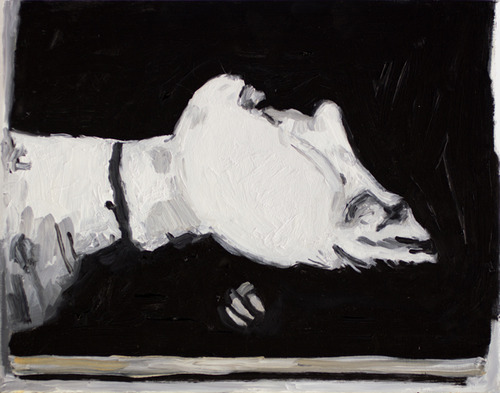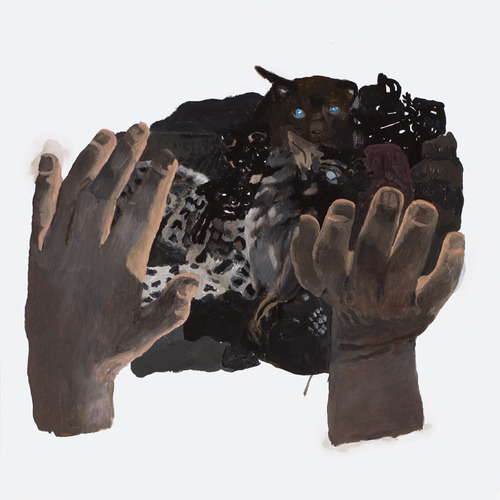
Margaux Williamson talks to Kenneth Goldsmith
Painter and filmmaker Margaux Williamson’s latest painting show, “I Could See Everything,” is currently showing at Mulherin + Pollard gallery in New York, accompanied by a book with the same name. The exhibit closes May 25. Poet Kenneth Goldsmith interviewed her last week. His introduction and the interview below:
I don’t trust painting. At least not in New York. Most painting here relies on formula and repetition, whoring itself to the market. There seems to be no risk and once a painter gets a strategy, very little exploration. As a result, I stopped thinking about painting a long time ago. I prefer forms of art that are more market-resistant, more idea-based, more—for lack of a better word—risky. So I was taken aback when I was so taken aback by Margaux Williamson’s paintings. The first thing I was attracted to was their scale: unusually small for New York. I was drawn to them and then drawn into them. Exquisitely painted, with a sweeping range of historical references, they won me over. My resistance crumbled. I found myself falling in love with painting again. Williamson’s paintings dissolve binaries and, in turn, dissolved my own binaries. By reconciling opposition in the most elegant way, they got me thinking, making me think that these are, in fact, conceptual works of art.
On a cool, rainy Thursday in May, we met in the gallery and chatted about her works, then decamped to Freeman’s Alley where, in the cozy confines of wobbly floorboards, Audubon prints, and stuffed deer heads, we continued our conversation over lunch.
—Kenneth Goldsmith
I. IN THE GALLERY
KENNETH GOLDSMITH: The range in this work is so incredible. These days, most of the time people do one thing, and yet you’re really an auteur. The abstractions are as delicate as the figurative works. But then you have a Richter—We painted the women and children first (Gerhard Richter’s painting “Dead”)—next to something more figurative, and that’s about artifice and distancing. What’s happening here is such incredible range and dimensionality. Can you talk a little bit about that?

We painted the women and children first (Gerhard Richter’s painting “Dead”)
MARGAUX WILLIAMSON: [Laughs] That’s so nice what you said. Well, I guess I’ve never been so interested in showing my own talent, so… I think I just have to find what seems right for each piece and for the whole body. I followed it very slowly.
KG: Where’s the beginning of this show for you?
MW: [They walk to the painting I healed the little animals] I made an earlier version of this one—

I healed the little animals
KG: That’s the first...
You have reached your article limit
Sign up for a digital subscription and continue reading all new issues, plus our entire archives, for just $1.50/month.
Already a subscriber? Sign in




